The trick with the multichannel approach is to understand how different channels work, but also have them work as a team.
Today you’ll discover a sales sequence that consists of cold emails and cold calls. Together, they work as a dynamic sales duo and we all know how powerful the right duo can be…

Remember, you don’t need to choose between cold calling and cold emailing. You can use both.
Creating the perfect cold email sequence
For this article to accomplish its goal, Ilya and I decided to walk you through every step of the process.
We’ll give you actual examples so you can see how it works in real life.
Let’s get rolling and see if we can do this.
1- Identify your target audience
Cold emailing and calling every lead on the planet is a recipe for failure. Simply, it will do you no good.
Even though it sounds like a tactic that can be executed in a few hours, you should never jeopardize your brand like this. It’s a corrupt outreach model that won’t work.
Instead, you have to figure out who’s your ideal client and what are their pain points. Here are a few questions you’ll need to answer.
- What’s the current objective of my prospect’s company?
- What are the obstacles on their road to achieving this objective?
- How does my product/service make my prospect’s job easier?
- Did the prospect hear about us in the past? How and where?
- What would be the path to them purchasing our product/service?
- What might hold them back?
Here is how to find your ideal client with a template
You can also think about localizing. You’re going to have to figure out a good localization strategy to find out the preferences of your ideal clients based on region, culture, and language. Finding your ideal client, whoever they are, can be made easier by finding out where they are. Don’t just expect them to know your brand on the outset.
2- Find phone numbers and email addresses
Two pieces of info we can’t email or call without. As the matter of fact, we wrote two huge guides on how to find contact information about prospects:
Find phone numbers with lemlist
Traditionally, finding phone numbers would be a time-consuming process, and often, phone numbers would turn out to be incorrect.
Not anymore:
With lemlist’s Find phone number feature, you can find accurate phone numbers at a low price.
No need for third-party tools; you can find the phone numbers straight from within lemlist.
lemlist uses ContactOut’s phone number database to ensure the accuracy of the phone numbers.
Finding phone numbers in lemlist is a breeze.
You can search for them:
- In the B2B database. Just select the leads you want to find phone numbers for, click on the “Push # leads to campaign” button, check the “Find phone numbers” option and push them to your campaign.
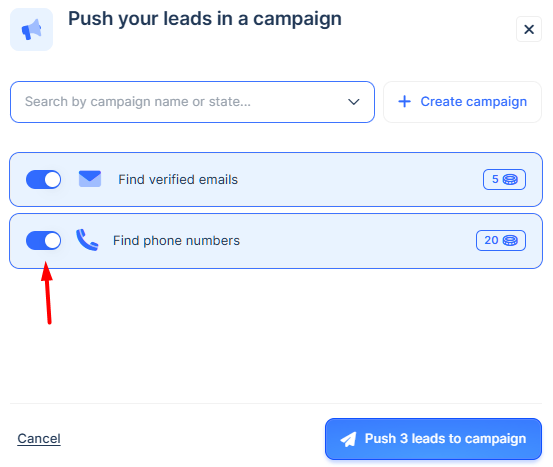
If numbers are found, they’ll appear in your leads’ phone number column.
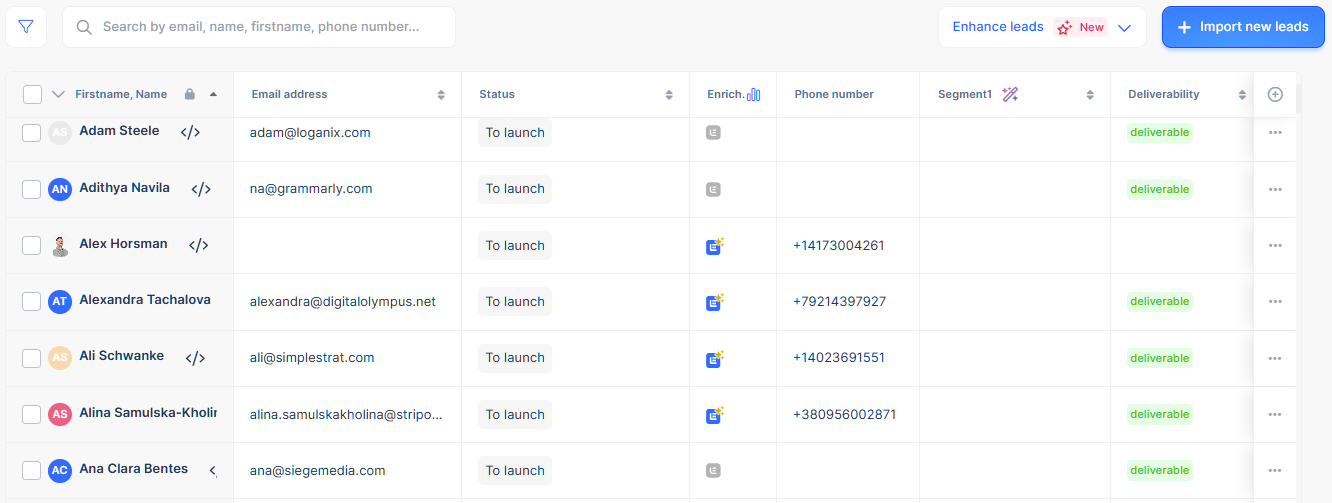
- In any campaign’s lead list. Select your leads, click “Enhance leads” and then “Find phone numbers”
- When importing a CSV with leads, check the “Find phone numbers” option.
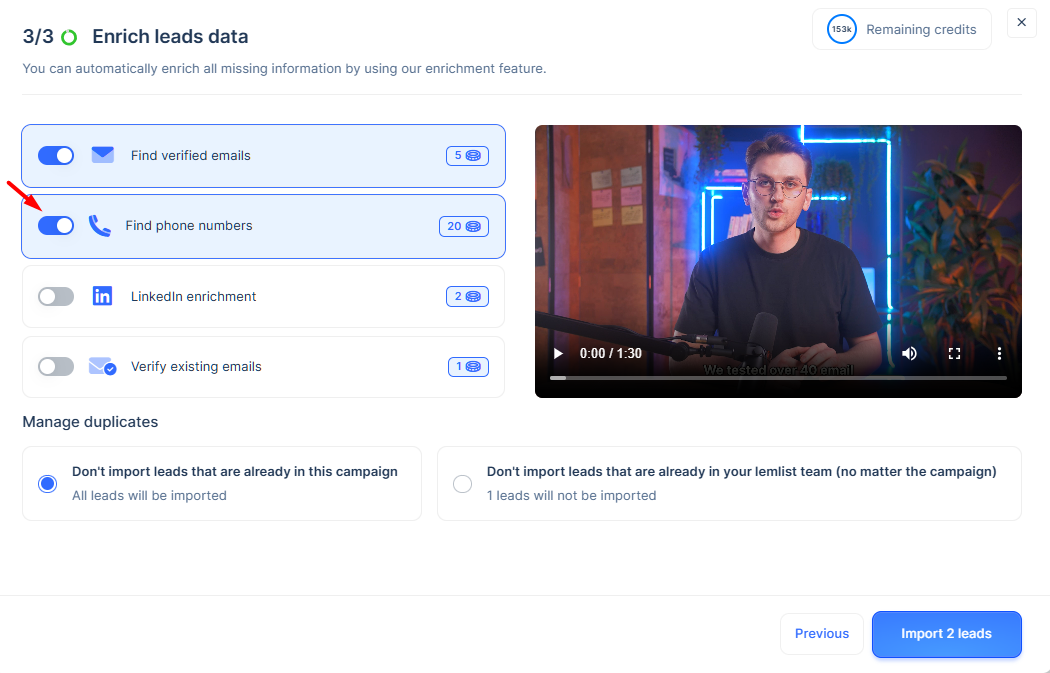
- With lemlist’s Chrome extension, you can find phone numbers directly on LinkedIn. Either search for your leads with LinkedIn search, click the push the leads to lemlist button and check the “Find phone” option.
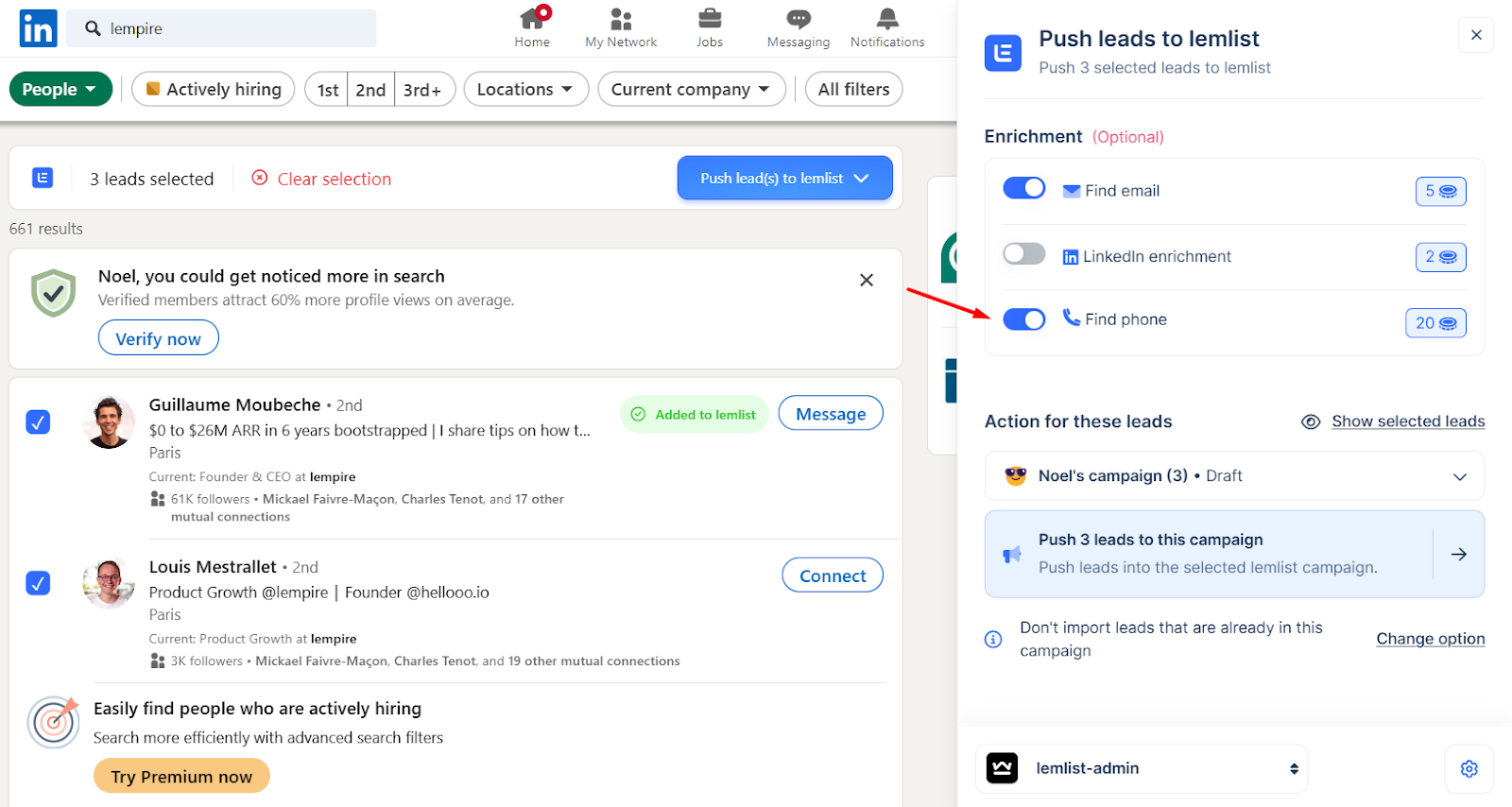
Alternatively, you can search for a phone number directly from any LinkedIn profile:
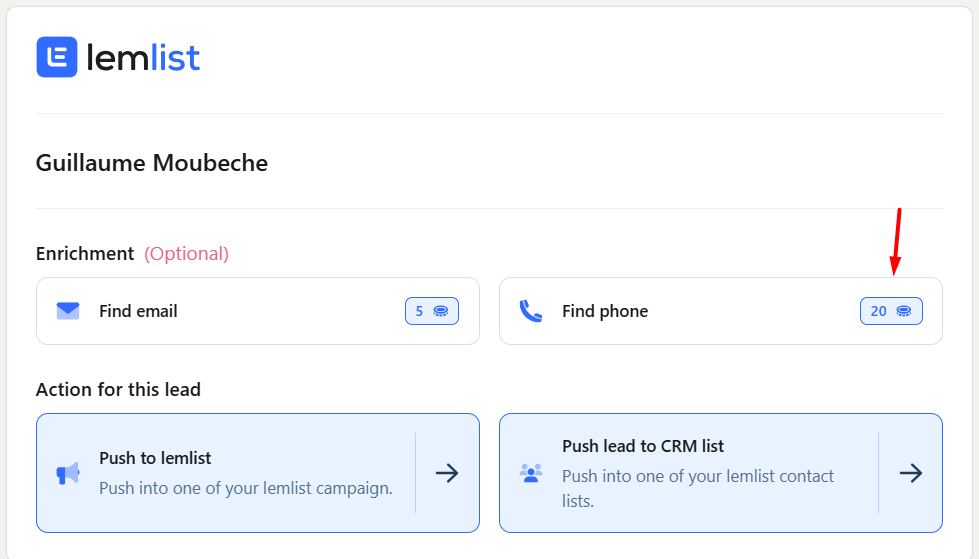
Pricing
Each lemlist plan comes with several free phone numbers. If you need more, they only cost $0.20 per number and you only pay on successfully finding a number. Even with lemlist’s freemium version, you get 25 phone numbers for free.
- Free Plan: Up to 25 free phone numbers
- Email Starter: Up to 25 free phone numbers
- Email Pro: Up to 38 free phone numbers
- MultiChannel Expert: Up to 75 free phone numbers
- Outreach Scale: Up to 125 free phone numbers
3- Validate both emails & numbers
A certain percentage of the contact details you find will inevitably be invalid or old.
The situation with phones and emails is uniquely different here. When dialing a wrong number, your loss is measured in minutes wasted. However, when emailing an invalid address, the stakes are doubled as it’s both your time and email reputation that’s at stake.
Meaning, if you send messages to invalid emails, you increase your chances to be trapped by SPAM triggers, damage your deliverability, and, one day, ruin your reputation as a result.
How to stop that from happening? Email and phone verification.
Validate phone numbers
There are many tools that get the job done. The one that caught our eye is Phone Validator from Textmagic. All you do is input the number and push the button.
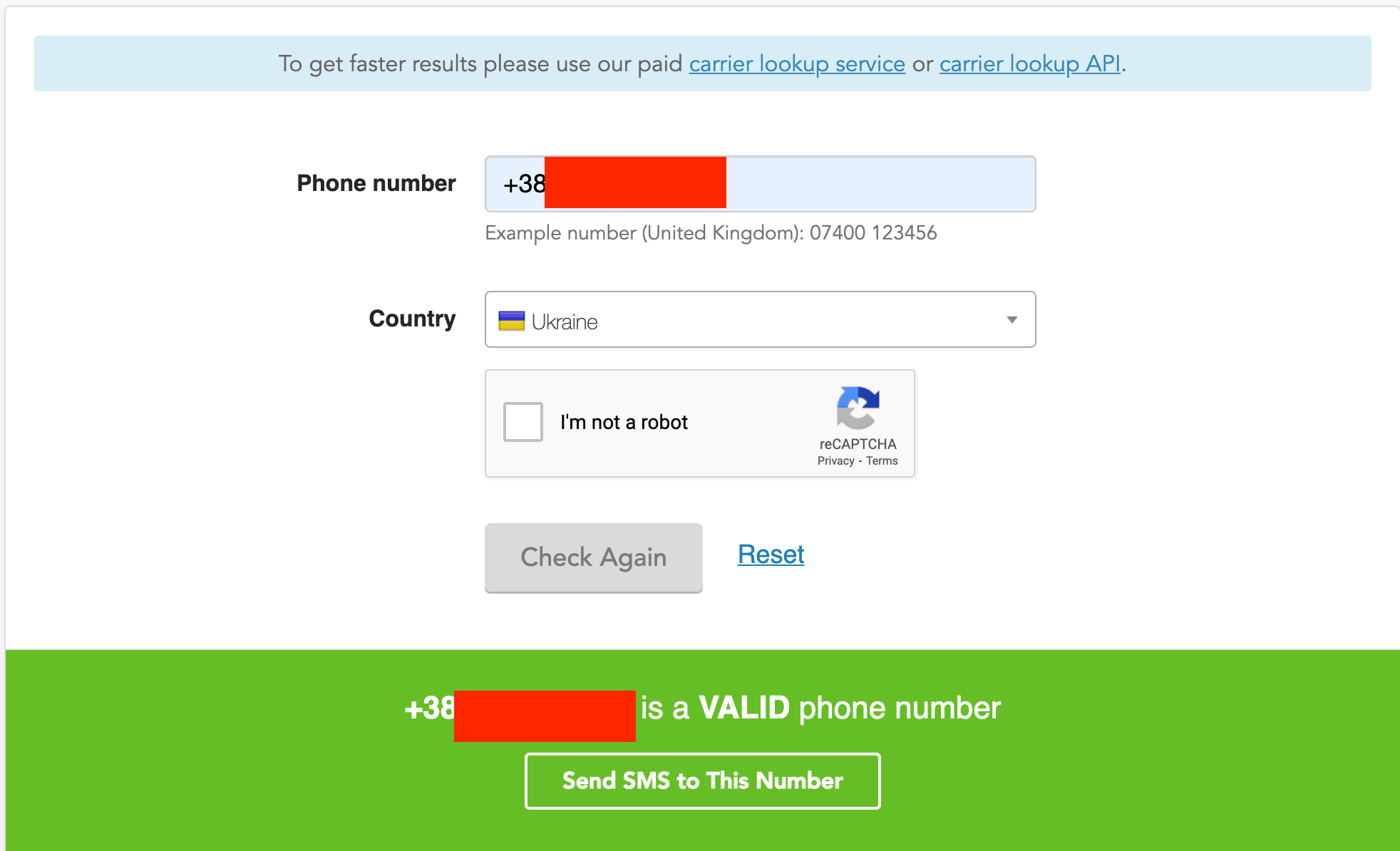
Validate email addresses
We’ve written a lot about email verification tools. We’ve even made an experiment with the top 7 email verifiers and found a winner!
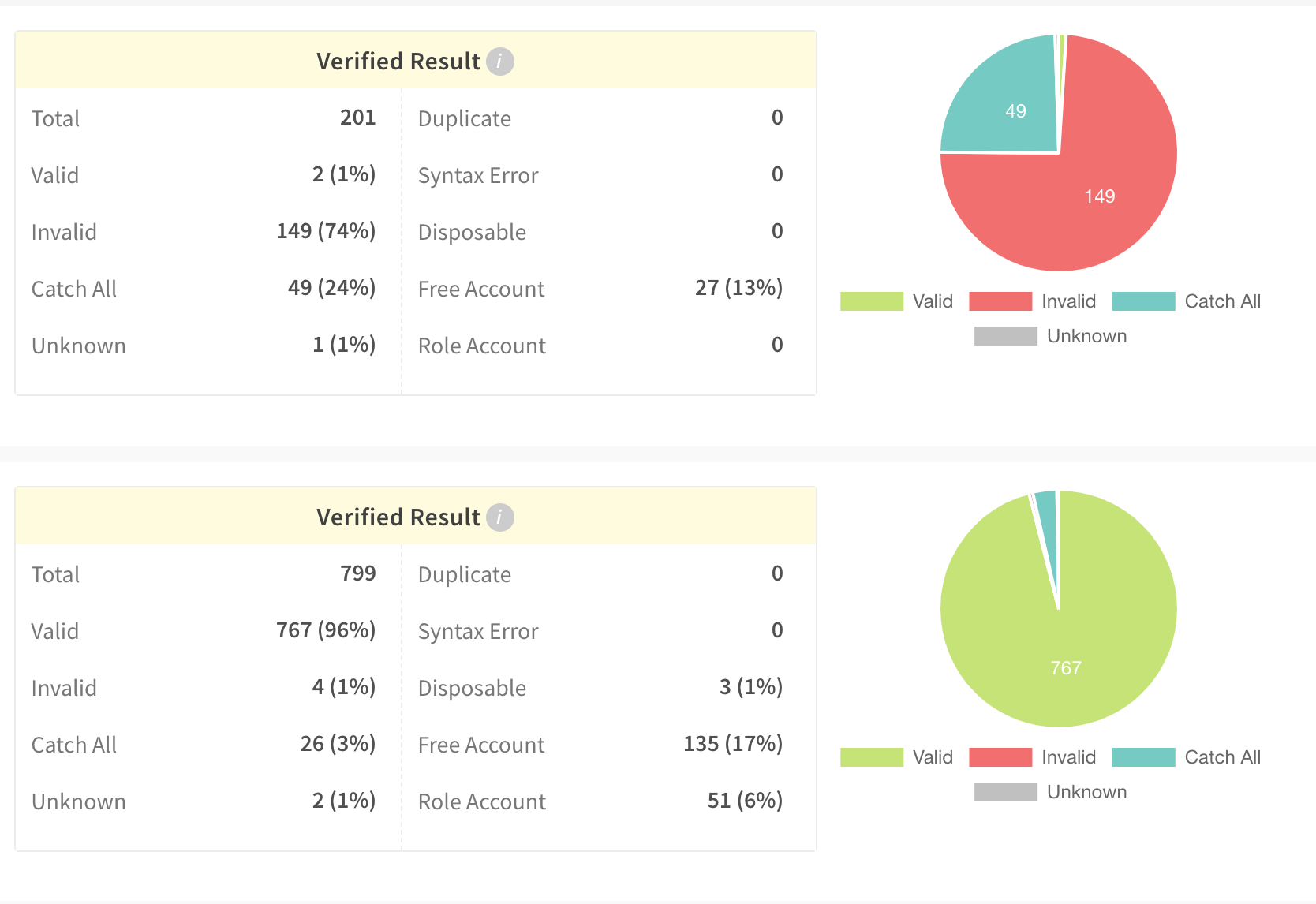
4- Integrate your cold email and cold call tools
Tons of tools to pick from in these two departments too. When you start shopping, we’d recommend keeping the following factor in the back of your brain.
Is it possible to integrate them in a painless way?
If the answer is yes, I guess you won’t break ya neck switching between the two of them… as Busta Rhymes would say. (if you need a song when reading this article, go old-school).
It’s time for selection. Here’s ours…
- for emailing, lemlist (obviously )
- for cold calling , Aircall
Connecting the two is a piece of cake.
Go to the Settings -> Integrations -> and connect your Aircall.io account.
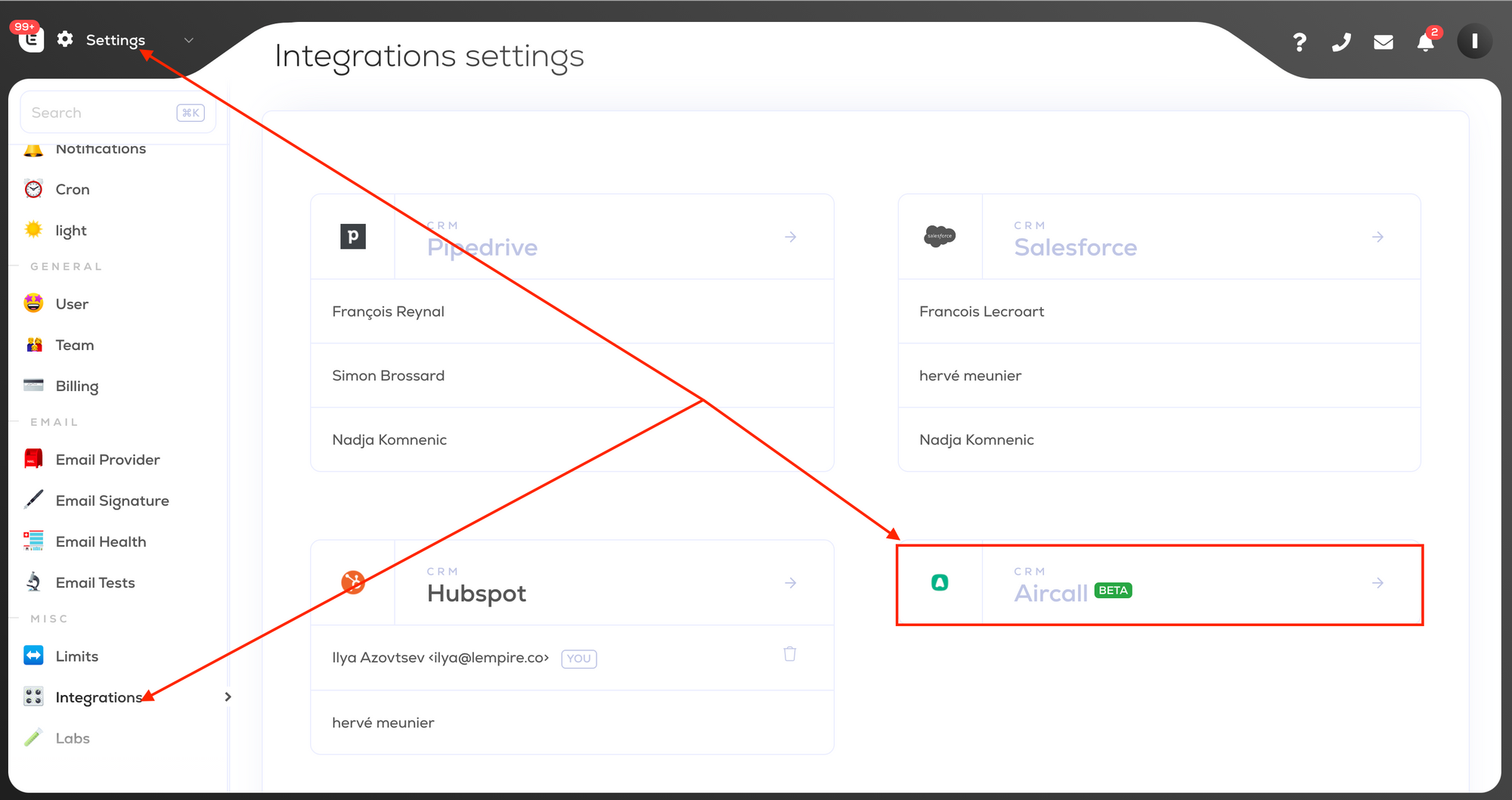
That’s it. Now we can get rolling on adding calls to your outbound sales sequence.
Step #1: Add a new step to your sequence – “Phone Call”:
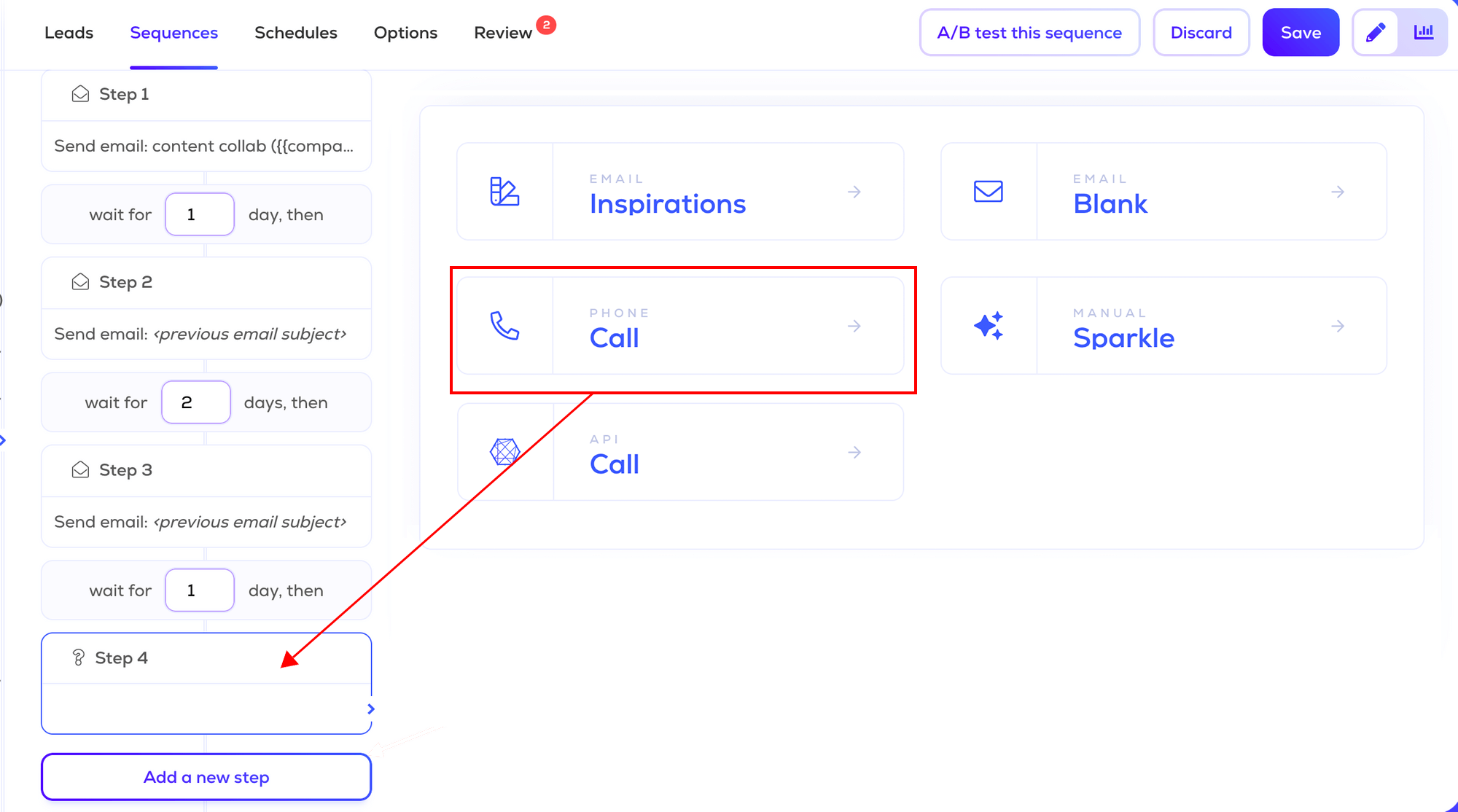
Step #2: Once it’s time to call the prospect, go to your Tasks section. Find the prospect in question and press the dial button.
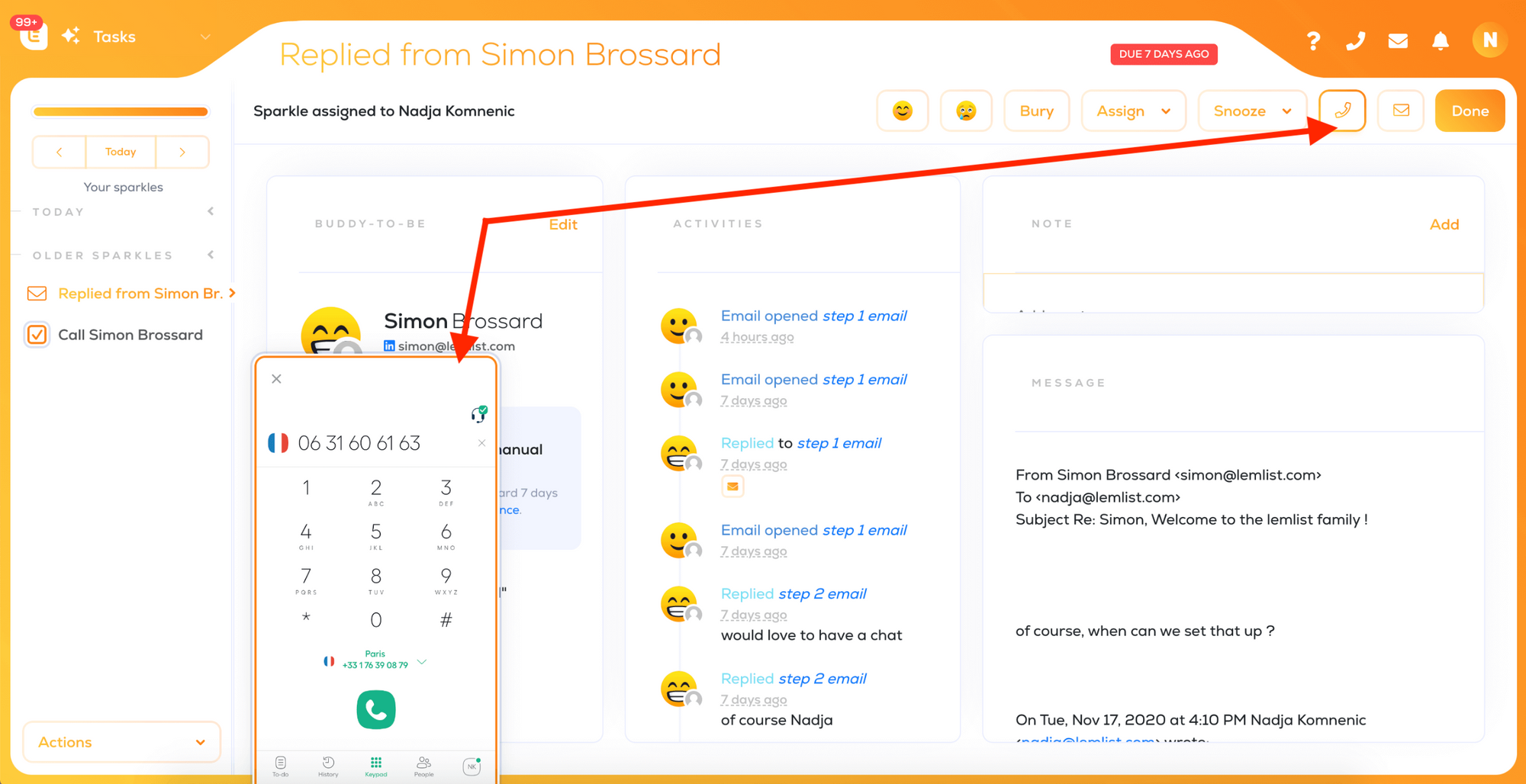
Step #3: Based on the outcome of your call, assign the right status to your lead to keep track of things.
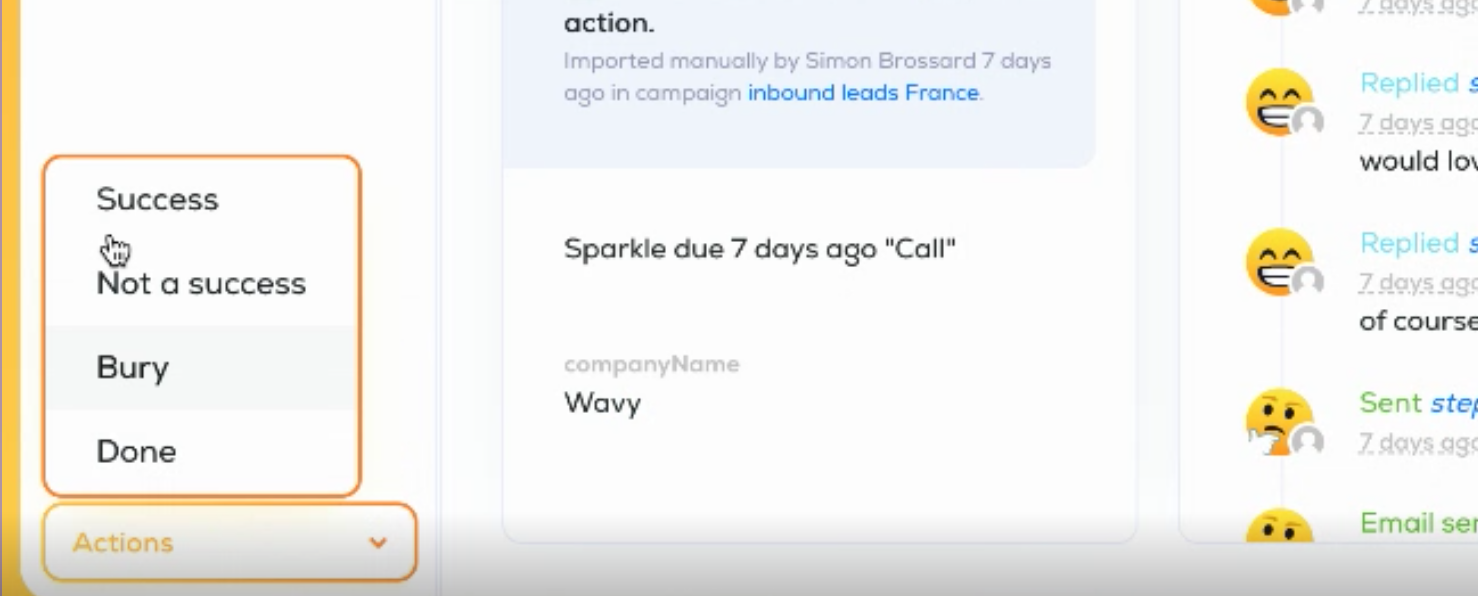
If you need a video to walk you through, we got you.
Here you go…
5- Create your multichannel sequence
We have our target audience, their contact details are safely stored in a CSV file, everything was verified, and our tools are properly integrated.
It’s time to connect the dots and start the magic!
You’re about to see a cold email sequence that Simon, our sales rep, uses to bring new users to lemlist. Here are his results…

When it comes to the step in his sequence, it’s made out of two cold emails, split by a cold call in the middle.
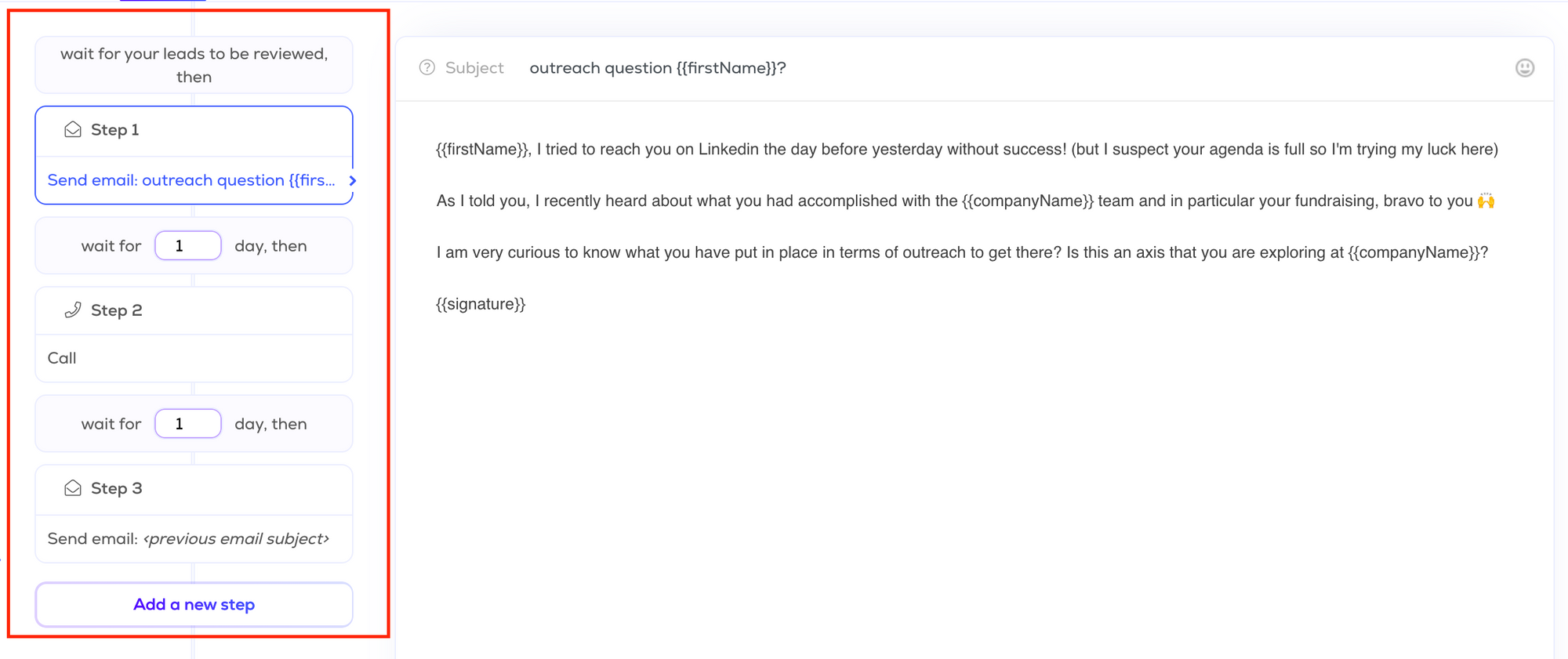
Keep in mind that we’ve translated it from French, so some things might sound better in Simon’s native language.
At the first glance, this is a pretty straightforward cold email template. But what’s the secret behind the 40% reply rate?
- Use LinkedIn to your advantage
If you manage to connect with your prospect on LinkedIn first or engage on each other’s content, the chances of getting a reply increase drastically.
In this example, Simon segmented prospects who didn’t respond and leveraged this sentence as a light intro.
He didn’t send all 220 connection requests or emails on the same day though. It was spread across a week. Because sending fewer emails gives you more time to do research properly and ramp up your reply rate.
- Customize messages to sound more human
Although it’s a pretty straightforward email, the second paragraph includes something that’s unique to the prospect. That way, Simon demonstrates he invested time in getting to know the prospect before landing in their inbox.
Then, his call-to-action feels like a cool invitation to talk sales and their plans, rather than Simon asking for a demo meeting where he would talk about lemlist.
Once a prospect replies and shares information around their objectives, Simon can personalize his approach further.
- Insights from research
A beautiful move Simon did here was to go to Welcome To The Jungle job board and understand what prospects are currently expanding their sales teams and what were the objectives they listed.
Knowing that, it didn’t matter if Simon was exchanging emails or talking on the phone. He already had the framework through which he can navigate the conversation.
The second step is to call a prospect if they don’t reply to the first email.
And thanks to the smooth lemlist<>Aircall.io integration, Simon cold calls the prospects in just a few clicks.

Everything is organized in one clean interface, along with how many times did this specific person opened an email or what links did they click on.
Had a cool chat with Simon around his cold calling game and he shared some fire advice I’m gonna pass to you.
- The call always goes in the middle of the sequence for maximum impact
- Simon stays in the zone by listing all the numbers before he starts dialing. That way, he doesn’t allow himself to do anything that keeps his mind away from the phone and manages to average 20 calls in an hour
- The goal of a call is to book a Zoom meeting
- Calls are done in under two minutes
- The intro line he uses is based on the pattern interrupt strategy.
“I totally understand you’re busy, all I need is 24 seconds to explain my point. Do you have 24 seconds?”
- Simon also likes to make a reference to the previous step – “I emailed you two days ago…” and never lets too much time pass between steps. Even if we’re talking about the time between the call and Zoom meeting. Two-day space is the maximum
- Next, he quickly pitches lemlist with a sentence that addresses the main pain point and asks the prospect about their current process
Any useful info Simon digs up on this call (e.g. overview of their process), he inputs it fast in Notes section in lemlist.
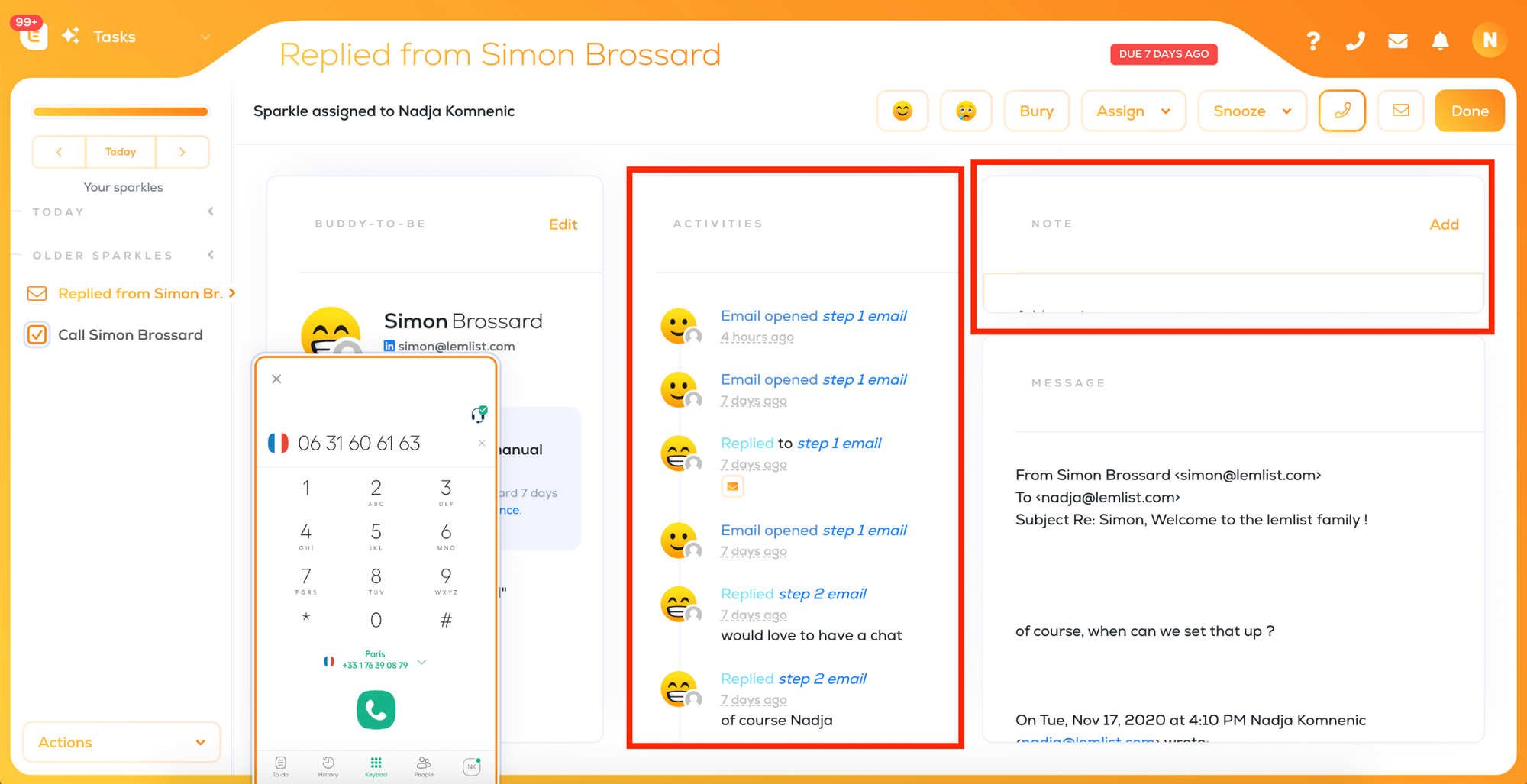
This intel is later used to prepare Zoom meetings and to improve sales operations overall.
Aircall also has a solid article around 6 best practices for cold calling.
The final step is the follow-up email in case Simon didn’t reach the person by cold calling. It gets delivered if a prospect didn’t reply on LinkedIn, first email, or cold call. Here’s the template.
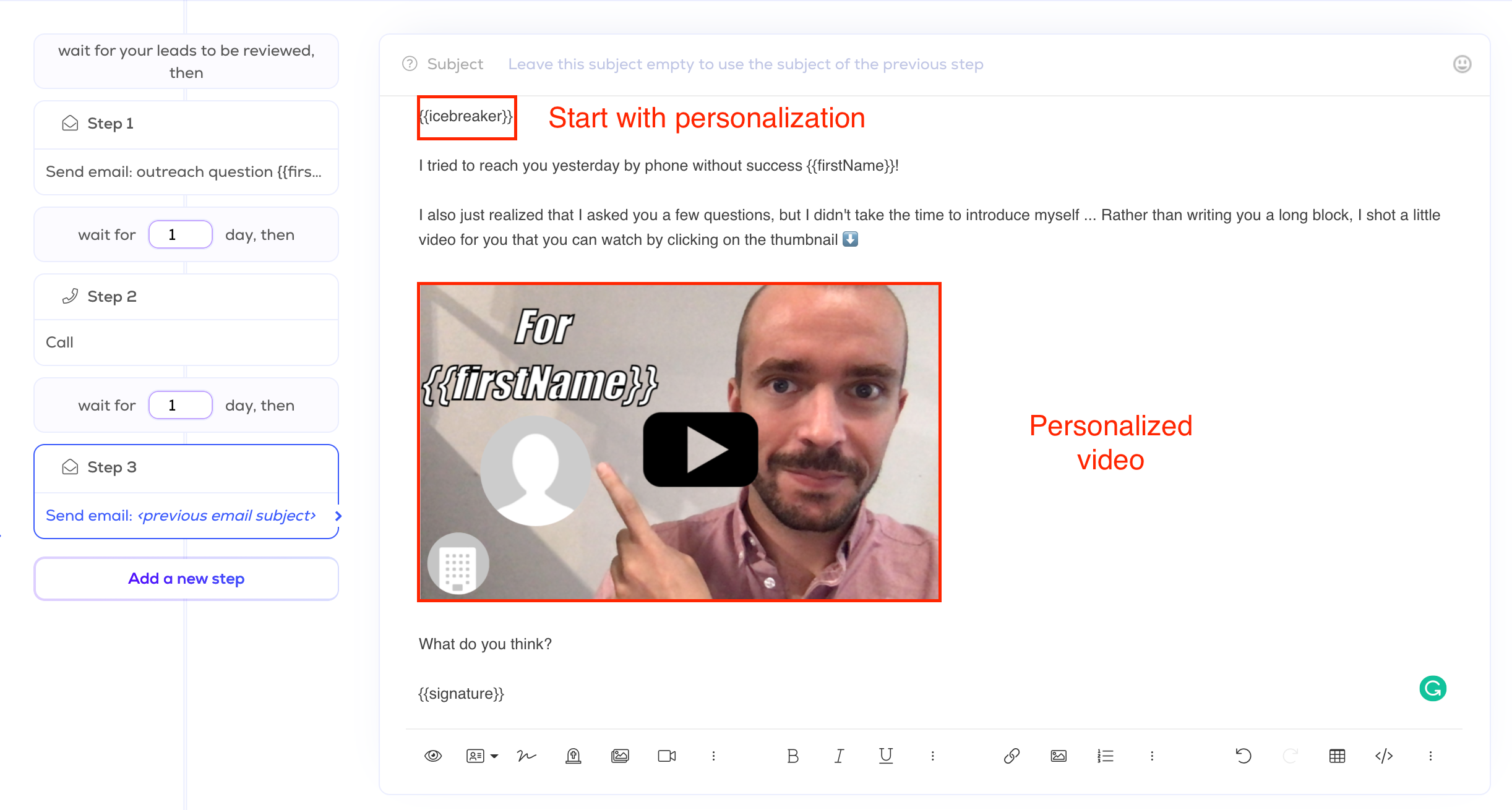
As you can see, it’s a reminder with a twist that references the previous step.
The goal is to squeeze in additional replies from people who were just too busy and forgot to reply before, among other reasons.
The email itself starts off with an {{icebreaker}} tag.
What the hell is that?
It’s a unique sentence that’s customized for every lead individually. What happens is, in your CSV file, you add a column called icebreaker. For every prospect, you write a unique intro.
I call this Tiramisu strategy. With just a little bit of research, you’ll be amazed by how many details you can pick that you can later leverage here.
Finally, Simon’s twist comes in the form of a personalized video thumbnail. It consists of multiple things:
- Simon’s image so people can see the real person
- Dynamic text with {{firstName}} tag
- LinkedIn profile pick of the person
- Company logo in the bottom left corner
- Play button
If you need a quick tutorial on how to create this, we got you.
It’s just an irresistible offer to click + a cool way for Simon to introduce himself and deliver the ask in the video form.
Once prospects click, they get taken to the twist number two – dynamic landing page.
Personalization doesn’t stop, because now the prospect lands on a custom page that’s tailored for him. No other person will see a page like this.
Here’s an example…
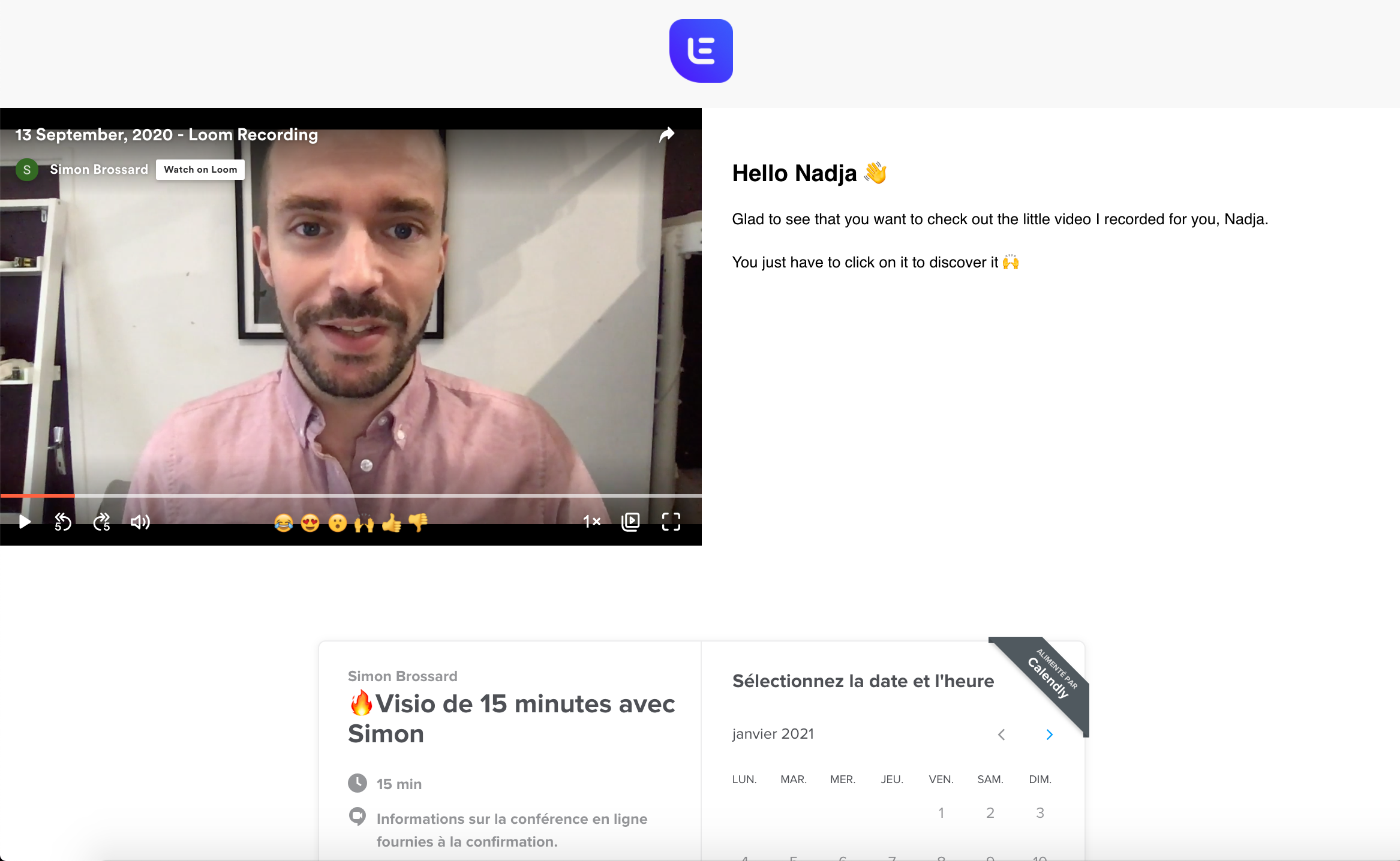
This page consists of:
- Video
- Unique text on the right that you can edit however you want
- Simon’s lemcal to decrease booking friction
This is one of the finest ways to book meetings and be different in a very noisy world of cold email outreach.
Bottom line
Besides Simon being the man, this is a great outbound sales sequence because it shows you how multichannel approach can make a big difference on your conversion rate.
51% of replies brought in hot leads. Meaning, 51 people were highly interested in what Simon had to show to them.
Also, if you “multichannel” like this, all the steps in your sales cadence are working together.
In Simon’s case, LinkedIn helps segment users into buckets: 1) Relationships established and 2) No connection yet. This helps you write personalized cold call emails addressing each segment accordingly.
The research stage reveals sales ambitions of different prospects which helps Simon prepare every step.
Overview of their process he gets on a cold call helps identify the focus point for the Zoom meeting.
Connecting the dots is what this is about. And the sooner you start, the more data you’ll have to optimize your process. It won’t be perfect from day one, but it will become unstoppable as you go.
Release the Kraken!
Much love,
Your source of actionable outreach tips and strategies that will help you get replies and grow your business.

